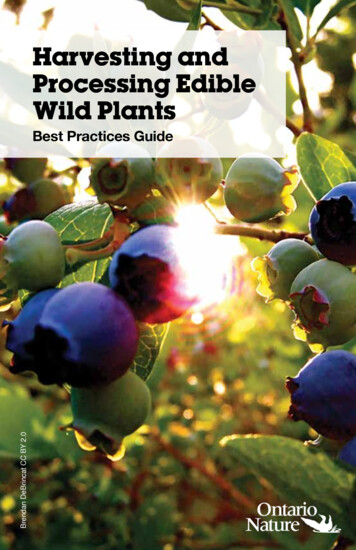
Transcription
Harvesting andProcessing EdibleWild PlantsBrendan DeBrincat CC BY 2.0Best Practices Guide
Preparation for HarvestWild edibles are important culturally, nutritionally and economicallyin Ontario. Aboriginal peoples have a long history of living off theland through the harvest of wild foods, providing communitieswith inexpensive and nutritious food year-round. Likewise, manyother cultures have traditions of harvesting edible wild plants.With the recent resurgence of interest in local foods, morepeople are recognizing the wide range of edible and medicinalapplications for local wild foods. Edible wild plants, whenharvested and handled properly, can support a range of uses.The purpose of this guide is to provide recreational foragers andsmall-scale commercial producers with an understanding of properharvesting, handling and packaging methods for edible wild plants.GUIDELINES FOR SUSTAINABLE HARVEST A general rule is to collect only five percent of any individualpatch of a given species within a maximum of 25 percent ofan area. Some species are more susceptible to overharvest thanothers and require more careful management. For example:- Wild leeks take seven years to produce seed and caneasily be overharvested.- No more than half of the fiddleheads from a single ostrichfern should be harvested to allow for regrowth. Even abundant species should be harvested in moderationto ensure species persistence and limited food waste. With the exception of harvesting roots, do not remove an entireplant – this provides the plant with an opportunity to regrow. Additional suggestions and cautions for harvest can be foundin the “Recommendations for Harvesting” section of this guide.Wild BlueberriesMarius Dragne / ShutterstockRULES FOR ACCESS Permission from a landowneris required before harvestingon private land – harvestingwithout this permission canresult in fines or charges.- It is advisable to get permission inwriting to avoid subsequent conflicts. Harvesting edible wild plants frompublic (i.e., Crown) land is permitted.The interactive Crown Land Use PolicyAtlas (available on the Ministry ofNatural Resources and Forestry’swebsite) can be used to locateCrown land and other land usetypes in Ontario. There areexceptions, including:- No commercial harvestingin national or provincialparks.- No harvesting of nationally orprovincially listed species at risk. In Thunder Bay, the harvest of ediblewild plants is also prohibited on LakeheadRegion Conservation Authority parks orproperties. Other municipalities may havesimilar regulations, so check with your localconservation authority before harvesting ontheir properties. Consult with local Aboriginal communitiesabout treaty rights, agreements and/orboundaries before harvesting on traditionalterritory. Initial information on traditionalterritories can be found at:ontario.ca/page/ontario-first-nations-mapWild StrawberryLeavesMallory VanierChanterelleStefan Holm / EssentialsCollection / Getty Images
Recommendationsfor HarvestingWHAT TO HARVEST Ensure you are 100 percent certain of identification beforeharvesting and consuming a species. Many species, bothplants and fungi, have look-alikes that may be harmful ifingested. For example:RaspberriesPavel Rodimov / EssentialsCollection / Getty Images- Almost all edible members of the Carrot family havesimilar, poisonous look-alikes.- The false morel is poisonous and looks similar to thefrequently foraged common morel.WHOM TO HARVEST FOR Consult at least two sources including online guides,print guides, videos, workshops or foraging experts toconfirm species identification. Some plants can cause unwanted side effectsfor some people when consumed. Do not harvest more than you can use or sell – this practicewill help reduce food waste and ensure plants have the optimalopportunity to regrow year after year. Many wild plants should not be consumed by pregnant ornursing women as they can stimulate the uterus and causespotting or miscarriage.WHERE TO HARVEST Avoid harvesting plants from areas where pollutants andcontaminants are present (e.g., industrial areas, roadsides). Avoid harvesting plants from areas that may have been sprayedwith herbicides.- Herbicides may be applied on a large scale over whole forests,or on a smaller scale on front lawns and around golf courses.- Spraying maps are available online to determine what areasof a public forest have been, or are planned to be, sprayed. Avoid harvesting aquatic plants from stagnant or potentiallypolluted waters (e.g., downstream from industrial development).- These plants include (but are not limited to): jack pine,burdock, yarrow, red clover, stinging nettle. Several wild plants can affect blood sugar levels, so diabeticconsumers should not consume them at all or should seekmedical advice before consuming.- These plants include (but are not limited to): burdock,stinging nettle. Consult with a doctor if you want to use wild plants formedicinal applications as effects and reactions will varyfrom person to person.- Medicinal plants are contraindicated with othermedications; seek medical advice. Proper research and understanding of edible wild plantsare important in order to recognize and/or communicate thecautions associated with some wild plants to customers. Product cautions should be clearly and prominentlylabelled on items before sale.
Washingand HandlingGENERAL WASHING AND HANDLINGPLANTS There will often be no access to sanitation whenforaging, so it is important to prepare accordingly.- Use garden gloves when picking plants, or havean alternate method of cleaning your hands whilepicking (sanitizer, moist wipes).- Collect berries in containers or baskets toavoid crushing them. Leafy greens can be washed andhandled similarly to lettuce and spinach(rinsed briefly and pat or spun dry).GoldenrodMallory Vanier Edible wild plants can be stored fresh inthe fridge, or processed and stored asoutlined in the “Storage” section.MUSHROOMS- Bring several sizes of bags andcontainers to preserve typesseparately. Mushrooms should be collected in abasket rather than a bag to avoidmoist conditions.- Brush off mushrooms to avoidspreading dirt and debris amongother collected edibles. The majority of dirt and debris shouldbe removed outdoors with a mushroombrush or a soft toothbrush.- Remove any small insects present on plants ormushrooms before placing them in a bag/basket. Any remaining dirt can be removed byrunning mushrooms lightly under coolwater, wiping with a damp cloth, brieflysoaking them in salt water, or removingsections with a paring knife. Do not pick plants with wilted, brown or damagedleaves as these plants are no longer suitable forconsumption. Foragers and producers must adhere to standards ofpersonal hygiene when preparing food for personal orcommercial use including tying long hair back, washinghands frequently, wearing gloves if there are cuts orburns present on their hands, and not preparing foodswhen ill. Prepare edible wild plants quickly upon returning toa kitchen (refrigerate, dry, freeze, etc.) – do not letharvested species sit unprocessed for long periodsof time. The Thunder Bay District Health Unit (TBDHU)offers courses for safe food handling that are highlyrecommended for new wild food entrepreneurs.(Other health units may offer similar courses.)- The ideal method for cleaningmushrooms will vary by speciesand intended use.- Many prefer to avoid direct contactwith water to better preserve theflavour of the mushroom.
StorageBLANCHINGAND FREEZINGDRYING Wild plants and fungi can be dried in a dehydrator, on a dryingrack, by hanging in small bunches or on low heat in the oven.- Mushrooms should be dried whole or in uniformly sized slices.- Ensure that drying racks have proper ventilation from below toallow uniform drying (e.g., dry plants on a screen or a specialtydrying mat).- Edibles being hung to dry should be out of direct sunlight topreserve nutritional properties of the plants. It is imperative that all moisture be removed from edibles beforestoring or processing to avoid the growth of mold and bacteria(they will be brittle and crumbly once they are properly dried). Once plants and fungi are sufficiently dried (i.e., all moistureis removed) they can be placed in airtight containers, masonjars or freezer bags labelled with the species name and dateof preparation or expiry. Species best suited for drying, include: lobster mushroom,morels, and any trees or plants used to prepare teas(raspberry, strawberry, red clover, mint, jack pine, yarrow).BoleteKaren Stephenson Many species that can befrozen should be blanched first(briefly placed in boiling water,often followed by an ice bath)to remove bacteria or stinginghairs on the plant.- Examples: lambs quarters,fiddleheads, stinging nettle Some species can be frozenwithout blanching, but shouldbe gently rinsed and patteddry before freezing.- Examples: dandelions,any leafy greens Mushrooms can be quicklyblanched or sautéedbefore freezing.- Example: chanterelle Store species separately infreezer bags labelled with thespecies name and date ofpreparation or expiry. Do not re-freeze edible wild plantsafter they have thawed. Frozen foods for sale must remainfrozen (must be transported incoolers with ice packs and cannotbe thawed at a market stall).CANNING/PRESERVING/BOTTLING All canned/preserved goods forsale must follow the OperatingGuidelines for Home Canningproduced by the TBDHU.- New jars and lids must be used(producers must not reuse old jars– even if they are not damaged).- High-acid foods, including jams,pickled vegetables, vinegarsand salad dressings, have alower risk of botulism due totheir increased pH and canbe canned/preserved throughtraditional processes.- Low-acid foods, including soup,non-pickled vegetables andmeat, will not be approved forsale in canned/preserved formdue to significantly higher riskof botulism. Consulting additional canning/preserving resources such asbooks, videos and workshopsis beneficial to new producersto ensure food is processedand preserved safely. All canned/preserved productsfor sale must be labelled with theproduct name, producer’s nameand date of preparation or expiry. Species best suited for canning,include: birch (sap), burdock(pickled root), cattails (pickledshoots), cranberry, raspberryand strawberry (jams and jellies).
Wild RiceAlejandro Rivera /Signature Collection /Getty ImagesADDITIONAL REQUIREMENTS Certain food products may require additional business licences or permits:- For example, extra permits are required for harvesting wild rice, processingmeat products and the out-of-province export/import of food products.Rules for SellingEdible Wild PlantsHEALTH GUIDELINES Food prepared for sale must follow the regulationsin the Health Protection and Promotion Act (1990)regarding the operation and inspection of a foodbusiness. Additionally, in the Thunder Bay region, food preparedfor sale must also adhere to the TBDHU guidelines forsafe handling and preparation.- Food prepared at home must meet the standardsoutlined in the Operating Guidelines for HomeCaterers (Found at: tbdhu.com).- A kitchen will be subject to inspection one to twotimes per year and requires a letter stating that onedoes not object to any inspections.- Food may also be prepared at an approved TBDHUkitchen location, such as the Regional FoodDistribution Association.Burdock Rootfitkitchen CC BY 2.0- The need for additional permits can be determined by calling amunicipal licensing office or visiting the BizPal Permit and Licencewebsite (bizpal.ca/en/).- Packaged foods must be clearly labelled with the product name,producer’s name and date of food preparation or expiry.- Labels are not required for fresh fruits, vegetables or berries packagedin clear wrappers, elastic bands or berry baskets under 1.14 L in size. Vendors wishing to sell edible wild plant products at a Farmer’s Market mustsubmit a Farmer’s Market Food Vendor Application Form for approval. Additional guidelines, such as the requirements for canned orjarred goods can be found in the “Storage” section of this guide. Similar guidelines and requirements will vary among regions/municipalities – check your local health unit for local requirements.ResourcesBarron, George. 1999. Mushrooms ofOntario and Eastern Canada. Lone Pine.Ontario Nature. 2015. Northern ForestForaging Guide. Ontario Nature.Canadian Food Inspection Agency. 2014.Food Products that Require a Label.Government of Canada. inspection.gc.caStephenson, Karen. 2015. PreservingWild Food – Storing foraged edibles.Edible Wild Food. ediblewildfood.com/preserving-foodLincoff, Gary. 2012. The Joy of Foraging –Gary Lincoff’s illustrated guide to finding,harvesting and enjoying a world of wildfood. Quarry Books.Michigan Mushroom Hunters Club.2015. Cleaning, Cooking andPreserving Your Mushrooms. MMHC.michiganmushroomhunters.orgThunder Bay District Health Unit. 2007.Operating Guidelines for Home Caterers.TBDHU. tbdhu.com/EH/FoodSafety/HomeCatererThunder Bay District Health Unit.Operating Guidelines for Home Canning.TBDHU. tbdhu.com/EH/FoodSafety/HomeCaterer
Ontario NatureBOREAL CONSERVATION OFFICEinfo@ontarionature.orgontarionature.orgMAIN OFFICE214 King Street West, Suite 612Toronto, ON M5H 3S6Tel: 416 444 8419 ontarionature.org
applications for local wild foods. Edible wild plants, when harvested and handled properly, can support a range of uses. The purpose of this guide is to provide recreational foragers and small-scale commercial producers with an understanding of proper harvesting, handling and p
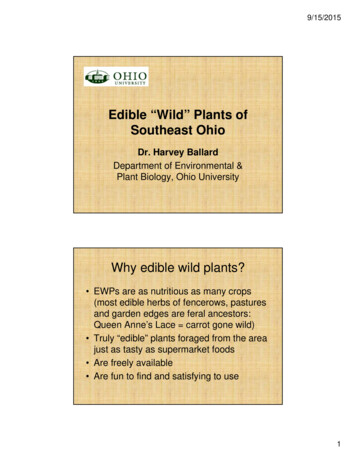
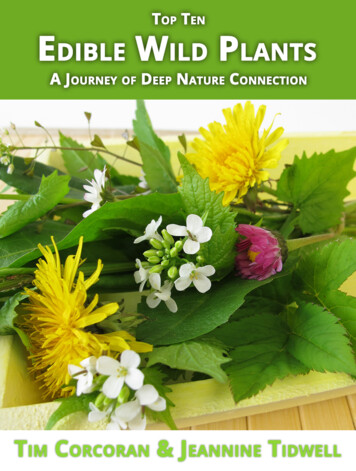
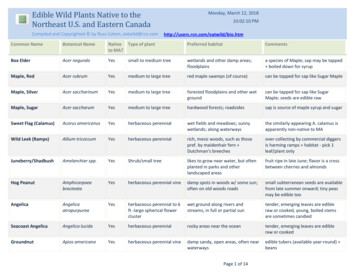
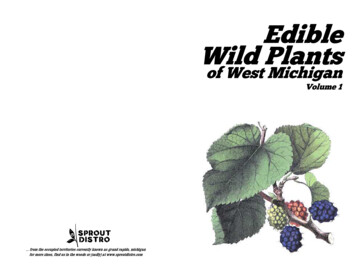
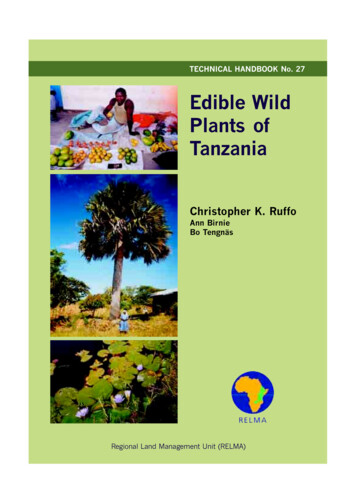
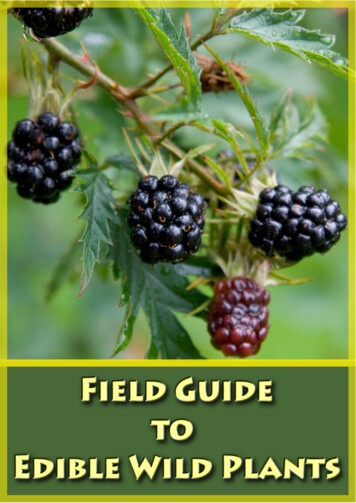
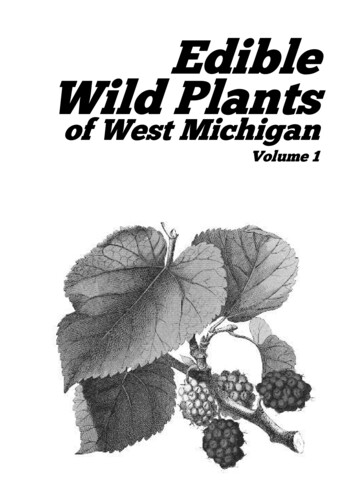
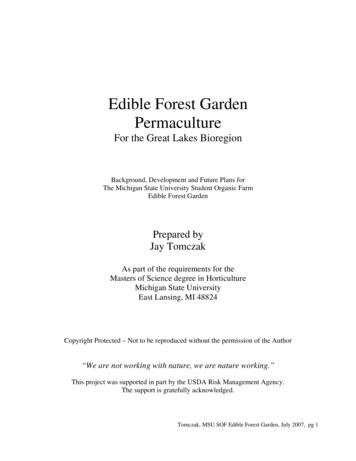
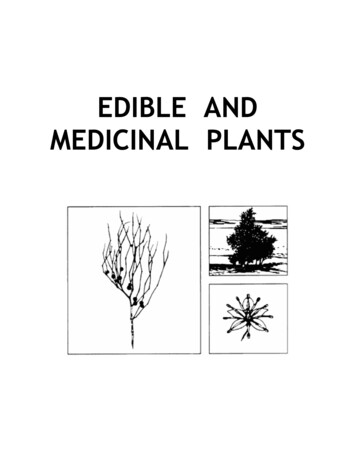
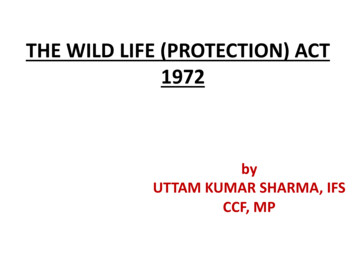
![INDEX [randycherry ]](/img/21/x-20-20tv-20fakebook-20-20hal-20leonard.jpg)